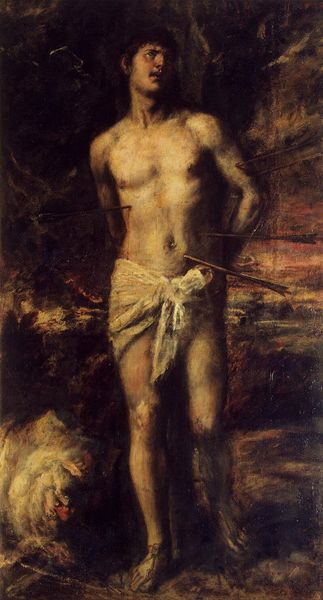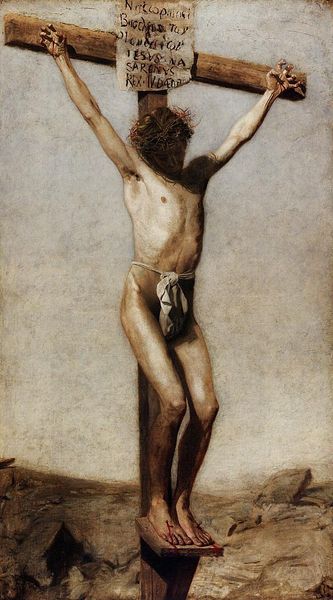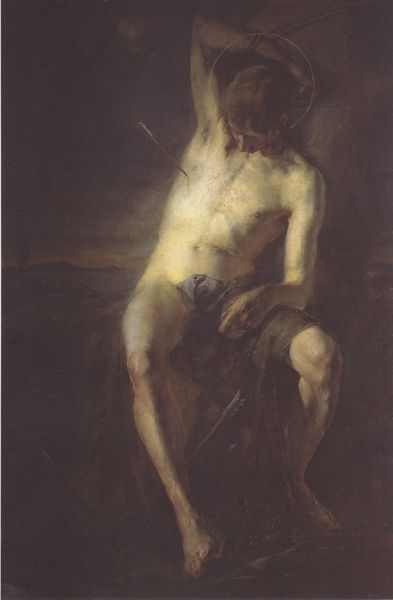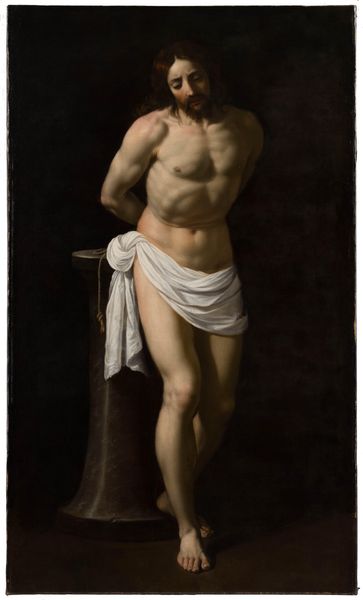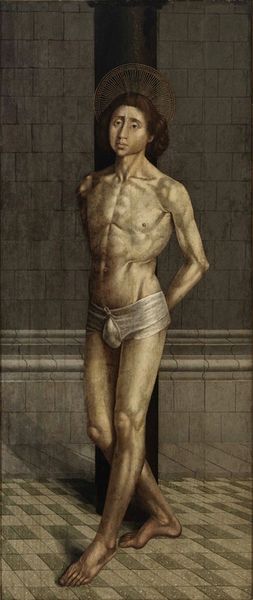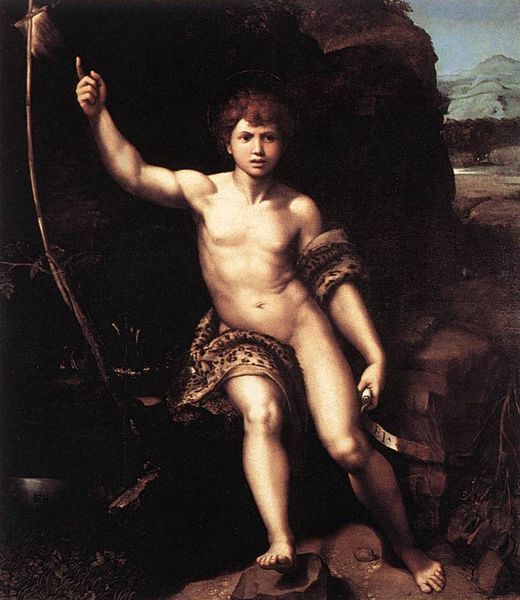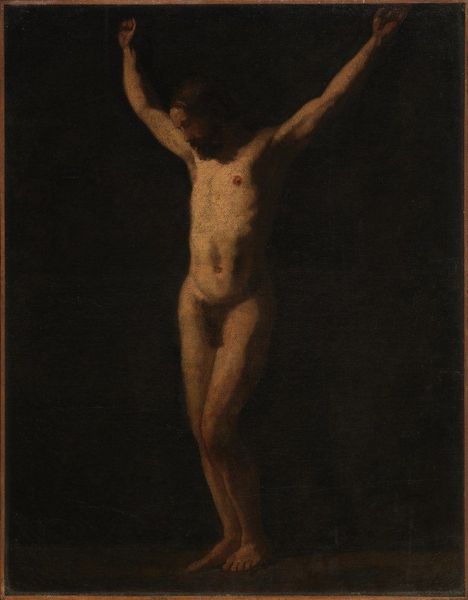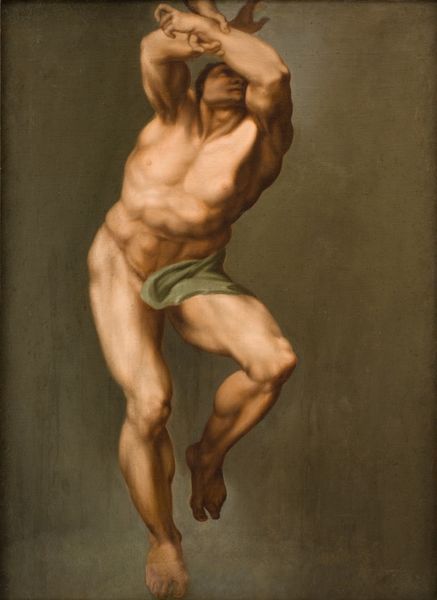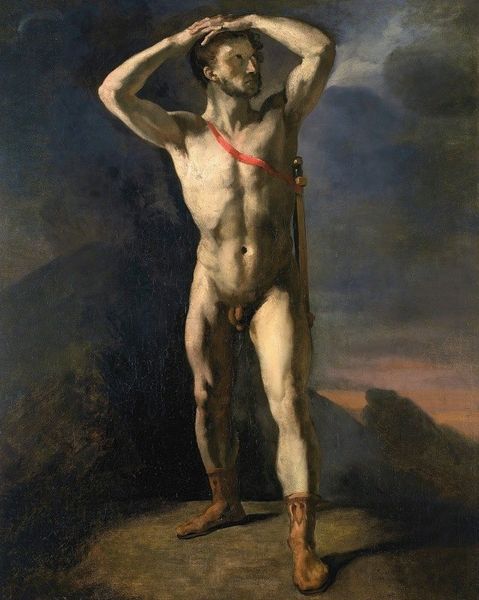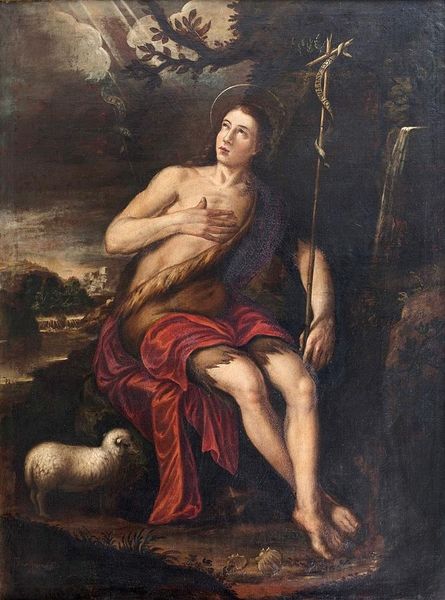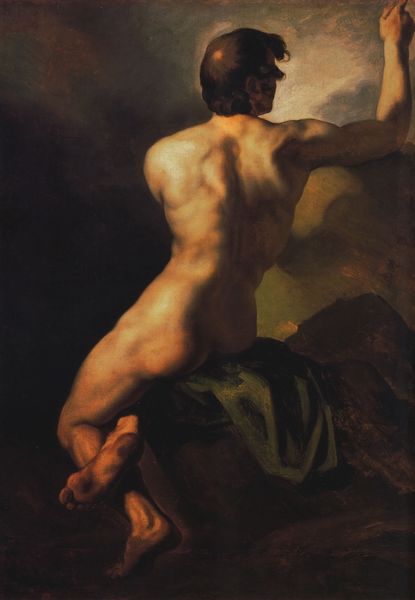
painting, oil-paint
#
portrait
#
painting
#
oil-paint
#
mannerism
#
figuration
#
painting painterly
#
history-painting
#
italian-renaissance
#
nude
Copyright: Public domain
Curator: Here we see a painting attributed to Palma il Giovane, a depiction of St. Sebastian that resides in the Hermitage Museum. Editor: It's striking, isn't it? Even through the aging varnish, that central figure is so alive, the agony seems almost... theatrical? Like performance art, before it was art. Curator: Mannerism often leans into the theatrical. The twisting pose, the exaggerated musculature, all designed to evoke a powerful emotional response from the viewer. It plays into the religious and political climate of the era. St. Sebastian was often invoked during plagues, making this image deeply relevant. Editor: Right, the Black Death insurance policy. But beyond the history, the body itself tells a story, doesn't it? It's vulnerable, exposed, but also so deliberately beautiful, almost like he is presenting himself. Does this vulnerability challenge assumptions, make a statement? Curator: Exactly! The martyr's body became a site of political messaging. During the Counter-Reformation, these images emphasized faith, suffering, and redemption. Also, there's the unavoidable homoerotic subtext that scholars have examined extensively; its place in queer history cannot be dismissed. Editor: Ah yes, the art history department will certainly make the most of that! Joking aside, looking at this figure though, the light catches his skin so strangely, especially where the arrows have pierced. It's almost as if they are not arrows, but rays of some celestial light. Did Palma do that on purpose? Curator: He likely sought to transform the moment of suffering into something transcendent. Martyrdom became not just a demonstration of pain, but evidence of divine grace. Note also the soft landscape receding into the background that is completely different than the brutal death happening in the foreground. It is classic of the style! Editor: It does, makes one question just what kind of grace demands its pound of flesh so violently, though. This is how art makes you think, how the painter asks "what is beauty for?". I appreciate how much dialogue an image like this can generate after all these years! Curator: I completely agree; its rich layering ensures an endless number of discussions and perspectives from new generations. It has been great to delve a little deeper into this work today.
Comments
No comments
Be the first to comment and join the conversation on the ultimate creative platform.
